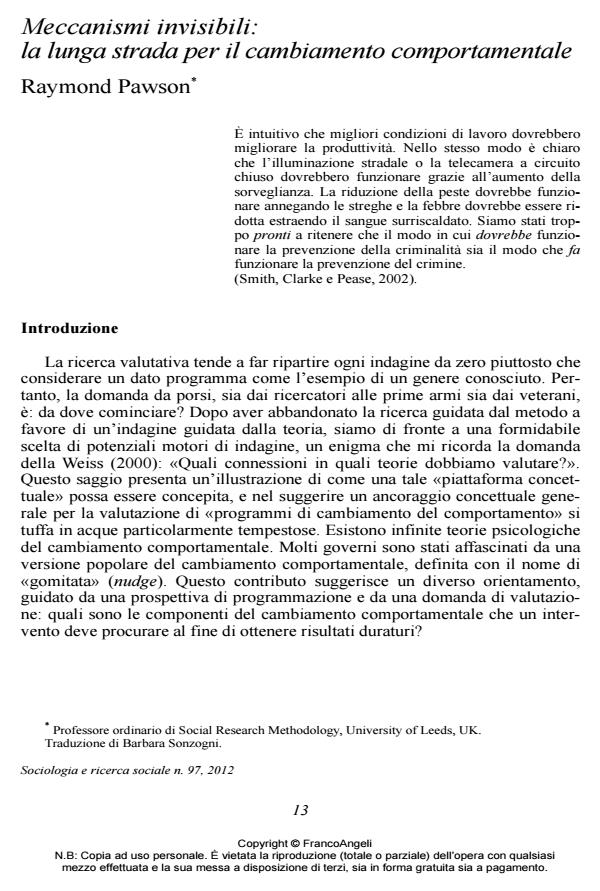Invisible Mechanisms: the Long Road to Behavioral Change
Journal title SOCIOLOGIA E RICERCA SOCIALE
Author/s Raymond Pawson
Publishing Year 2012 Issue 2012/97 Language Italian
Pages 29 P. 13-41 File size 1035 KB
DOI 10.3280/SR2012-097004
DOI is like a bar code for intellectual property: to have more infomation
click here
Below, you can see the article first page
If you want to buy this article in PDF format, you can do it, following the instructions to buy download credits

FrancoAngeli is member of Publishers International Linking Association, Inc (PILA), a not-for-profit association which run the CrossRef service enabling links to and from online scholarly content.
What conceptual platform guides a realistic evaluation of programs aimed to change behavior? Change is difficult and happens slowly: the subjects involved vary between hesitation, enthusiasm, reflection, comings and goings. This essay presents a model that is contrary to the mainstream tendency of treating programs as independent units of linear development. To evaluate program results it is necessary to discover the mechanisms that influence people’s behavior: these are instead often «invisible» because tacit, too familiar, and therefore taken for granted (including waiting, announcing, filters in selection, and exit expectations). Such mechanisms can be understood by studying the phases, the variations in the implementation, the neglect and «blind alleys». Decision makers should also take into consideration these mechanisms and build programs that reflect paths to change instead of jumping-off points.
Raymond Pawson, Meccanismi invisibili: la lunga strada per il cambiamento comportamentale in "SOCIOLOGIA E RICERCA SOCIALE " 97/2012, pp 13-41, DOI: 10.3280/SR2012-097004